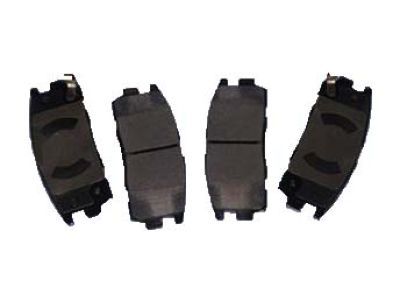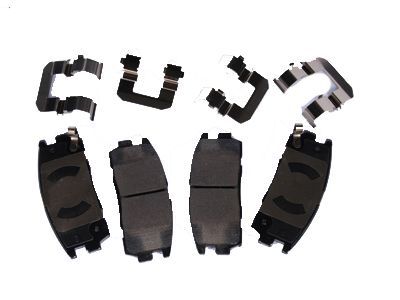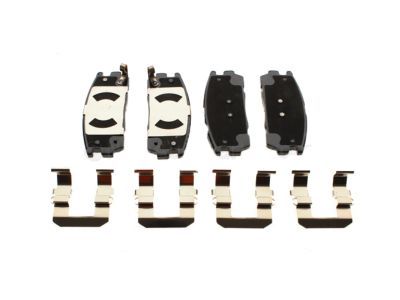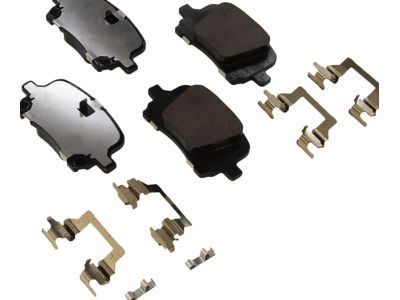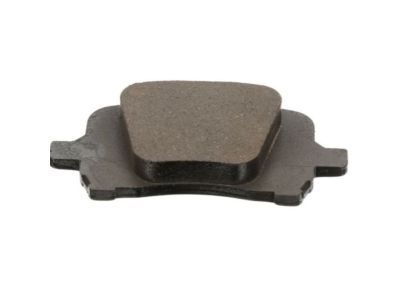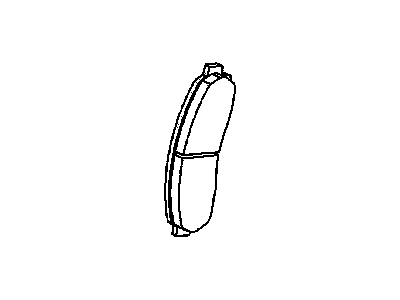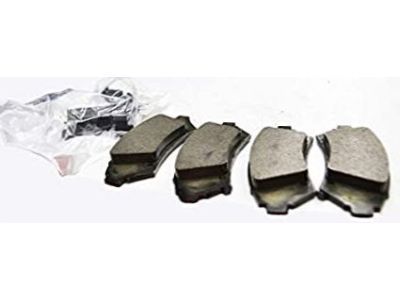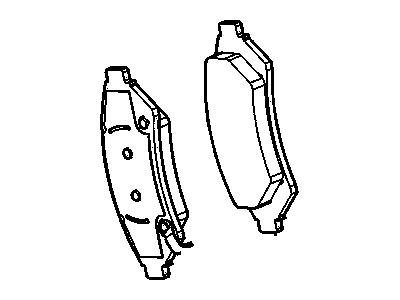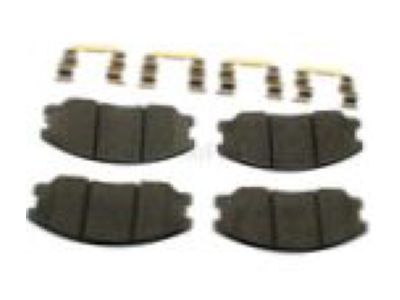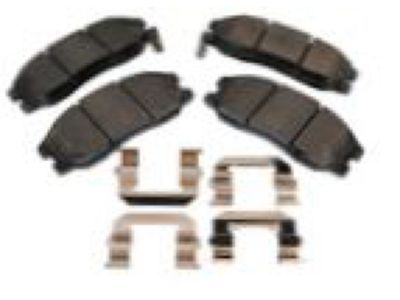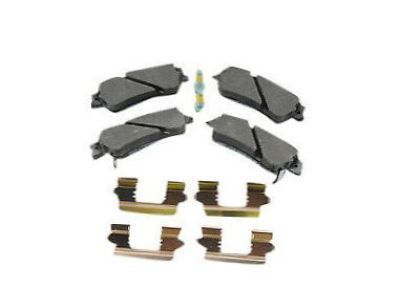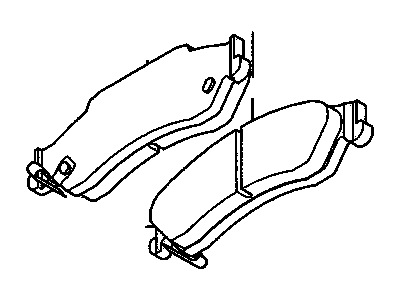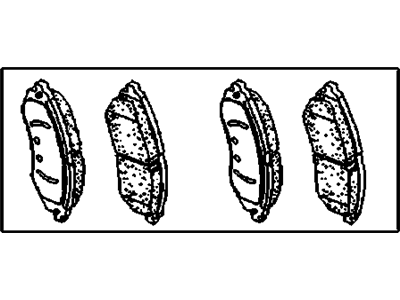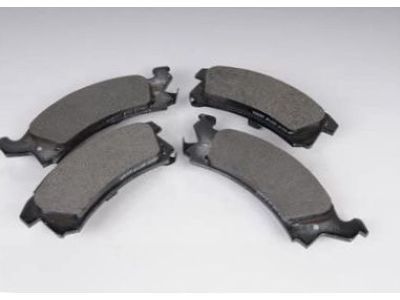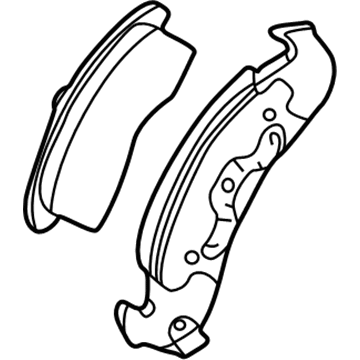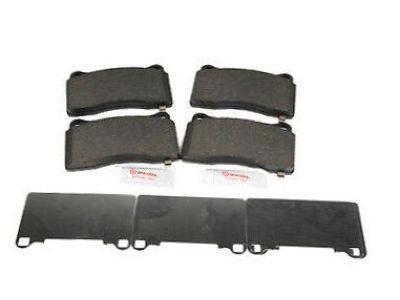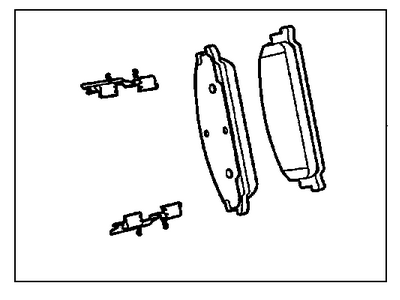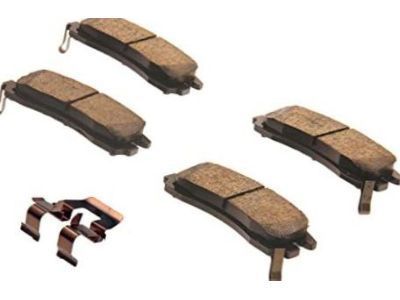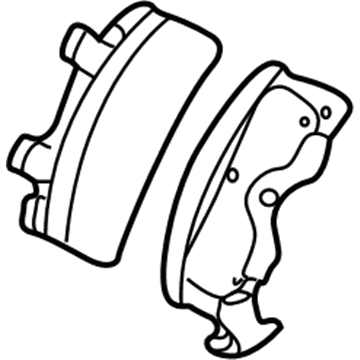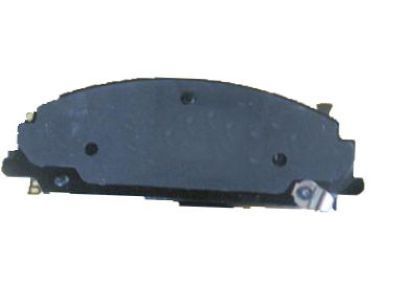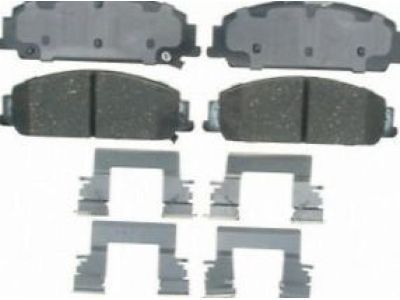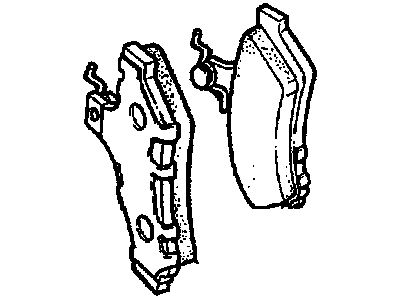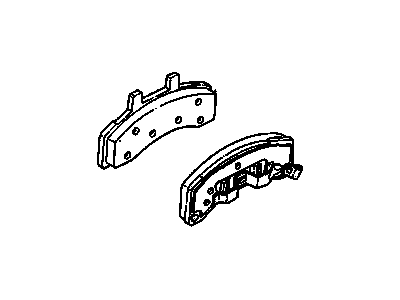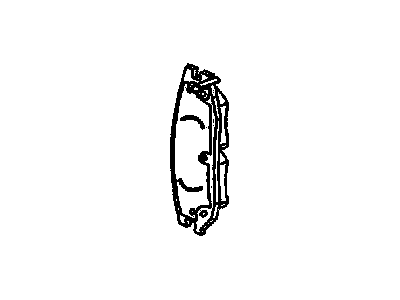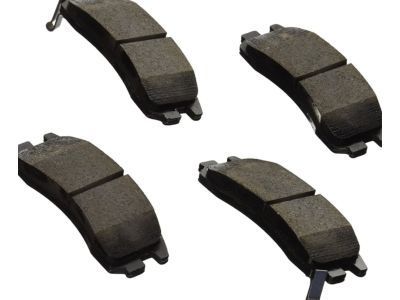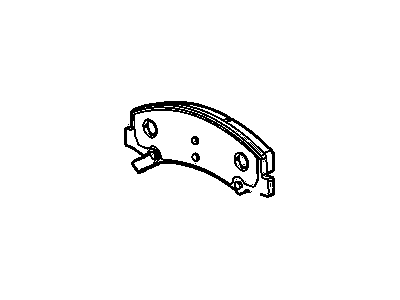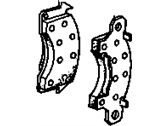
My Garage
My Account
Cart
Genuine Pontiac Brake Pad
Disc Brake Pad Set- Select Vehicle by Model
- Select Vehicle by VIN
Select Vehicle by Model
orMake
Model
Year
Select Vehicle by VIN
For the most accurate results, select vehicle by your VIN (Vehicle Identification Number).
67 Brake Pads found
Pontiac Pad Kit,Rear Disc Brake
Part Number: 20801538$98.46 MSRP: $191.93You Save: $93.47 (49%)Ships in 1-2 Business DaysProduct Specifications- Other Name: PAD KIT, Brake; Brake Pad, Rear Pad
- Position: Rear
Pontiac Pad Kit, Front Disc Brake
Part Number: 22820406$75.20 MSRP: $147.87You Save: $72.67 (50%)Ships in 1-2 Business DaysProduct Specifications- Other Name: PAD KIT, Brake; Brake Pad, Front Pad
- Position: Front
- Replaces: 15808204, 25957440, 20881786
Pontiac Pad Kit,Front Disc Brake
Part Number: 19152666$69.57 MSRP: $136.82You Save: $67.25 (50%)Ships in 1-2 Business DaysProduct Specifications- Other Name: PAD KIT, Brake; Brake Pad, Front Pad
- Position: Front
- Replaces: 18042214, 18045380, 18048030, 18042442, 88964119
Pontiac Pad Kit,Front Disc Brake
Part Number: 18026298$49.36 MSRP: $136.27You Save: $86.91 (64%)Ships in 1-2 Business DaysProduct Specifications- Other Name: PAD KIT, Brake; Brake Pad, Front Pad
- Position: Front
- Replaces: 18026165
Pontiac Pad Kit,Front Disc Brake
Part Number: 19168899$74.79 MSRP: $147.08You Save: $72.29 (50%)Ships in 1-2 Business DaysProduct Specifications- Other Name: PAD KIT, Brake; Brake Pad, Front Pad
- Position: Front
Pontiac Pad Kit,Rear Disc Brake
Part Number: 92265457$100.72 MSRP: $278.07You Save: $177.35 (64%)Ships in 1-2 Business DaysProduct Specifications- Other Name: PAD KIT, Brake; Brake Pad, Front Pad, Rear Pad
- Position: Rear
- Replaces: 92233071, 92250968
Pontiac Pad Kit,Front Disc Brake
Part Number: 96475176$74.45 MSRP: $145.15You Save: $70.70 (49%)Ships in 1-2 Business DaysProduct Specifications- Other Name: PAD KIT, Brake; Brake Pad, Front Pad
- Position: Front
- Replaces: 96534655
Pontiac Pad Kit,Front Disc Brake
Part Number: 19152705$47.79 MSRP: $131.96You Save: $84.17 (64%)Ships in 1-2 Business DaysProduct Specifications- Other Name: PAD KIT, Brake; Brake Pad, Front Pad, Pad
- Position: Front
- Replaces: 88957253, 18024932
Pontiac Pad Kit,Front Disc Brake
Part Number: 89047725$149.21 MSRP: $411.92You Save: $262.71 (64%)Ships in 1-2 Business DaysProduct Specifications- Other Name: PAD KIT, Brake; Brake Pad, Front Pad
- Position: Front
- Replaced by: 19433360
- Product Specifications
- Other Name: PAD KIT, Brake; Brake Pad, Rear Pad
- Position: Rear
- Replaces: 18024939, 18024930, 18040160, 18043995
Pontiac Pad Kit, Front Disc Brake
Part Number: 92206846$94.33 MSRP: $260.40You Save: $166.07 (64%)Ships in 1-2 Business DaysProduct Specifications- Other Name: PAD KIT, Brake; Brake Pad
- Position: Front
- Replaced by: 92250826
Pontiac Pad Kit,Rear Disc Brake
Part Number: 92175205$77.65 MSRP: $214.35You Save: $136.70 (64%)Ships in 1-2 Business DaysProduct Specifications- Other Name: PAD KIT, Brake; Brake Pad, Rear Pad
- Position: Rear
- Replaces: 92210619
Pontiac Pad Kit,Front Disc Brake
Part Number: 19152635$79.49 MSRP: $144.53You Save: $65.04 (45%)Ships in 1-2 Business DaysProduct Specifications- Other Name: PAD KIT, Brake; Brake Pad, Front Pad
- Position: Front
- Replaces: 18024933, 18021261, 18022641, 18024923, 18024936, 18023375
Pontiac Pad Kit,Rear Disc Brake
Part Number: 19178361$67.60 MSRP: $131.79You Save: $64.19 (49%)Ships in 1-2 Business DaysProduct Specifications- Other Name: PAD KIT, Brake
- Position: Rear
- Replaces: 88964140
Pontiac Pad Kit,Front Disc Brake
Part Number: 92250826$94.33 MSRP: $260.40You Save: $166.07 (64%)Ships in 1-2 Business DaysProduct Specifications- Other Name: PAD KIT, Brake; Brake Pad, Front Pad
- Position: Front
- Replaces: 92206846, 92228272
Pontiac Pad Kit, Front Disc Brake
Part Number: 25809846$35.47 MSRP: $66.93You Save: $31.46 (47%)Ships in 1-2 Business DaysProduct Specifications- Other Name: PAD KIT, Brake; Brake Pad, Front Pad
- Position: Front
- Replaces: 15243704
- Product Specifications
- Other Name: PAD KIT, Brake; Brake Pad, Rear Pad
- Position: Rear
- Replaces: 88967229, 18045984
- Product Specifications
- Other Name: PAD KIT, Brake; Brake Pad
- Position: Front
- Product Specifications
- Other Name: PAD KIT, Brake
- Position: Front
- Replaces: 18024935
- Product Specifications
- Other Name: PAD KIT, Brake; Brake Pad, Front Pad
- Position: Front
- Replaces: 89060375
| Page 1 of 4 |Next >
1-20 of 67 Results
Pontiac Brake Pad
If you're searching for OEM Pontiac Brake Pads, look no further. Our website boasts an extensive inventory of genuine Pontiac Brake Pads, all available at competitive prices online. Every part we offer comes with a manufacturer's warranty. In addition, we provide a straightforward return policy and rapid delivery services, making your shopping experience a breeze.
Pontiac Brake Pad Parts Questions & Experts Answers
- Q: Should rear disc brake pads be replaced on both wheels simultaneously on Pontiac Firebird?A:Disc brake pads are to be replaced on both the wheels as a general rule of practice. The common health risk that may be encountered by workers while working in brakes' system is asbestos dust. It is recommended that first you open the cap of the brake fluid reserve and then with the help of a syringe, drain two-third of the brake fluid and then dispose of it. Lift up the rear of the vehicle using jackstands and unlock the parking brake if it is presently engaged. Take off the wheel and use one lug of the wheel to secure the rotor, do this at one brake assembly at a time. For vehicles prior to 1988 x remove both the brake caliper and the brake pad in case you require a screwdriver to do so. Remove the sleeves and bushings from the caliper ears and also pull off the flexible two way check valve from the caliper piston. If leakage is observed, lubricate new sleeves and bushings must be lubricated with silicone grease, and put them into use. Coat a new check valve which is two way and place the inboard pad on the caliper such that the O-shape tab lies on the O-shape notch of the piston. Place the inboard pad with the wear sensor facing the former leading edge, the backing plate must rest against the piston. Fit the outboard pad, introduce the caliper and anchor it by pressing the brake pedal vigorously. With regard to vehicles manufactured from 1989 onwards, align a C-clamp with the caliper housing to force the piston to the most bottomed position; secondly, break the upper guide pin bolt of the caliper and dispose it. Turn the caliper accordingly to take off the pads and use brake system cleaner to clean the caliper and bracket since breathing the dust is dangerous. Examine guide pins and spokes for signs of corrosion and other kinds of abuse, and replace when necessary. At this point, install the outer pad into the caliper housing and, without touching the friction area, press the inner pad with the wear sensor into the piston until it is in contact, in the absence of contamination; Turn the caliper horizontally, and while aligning the holes, fit a new caliper upper guide pin bolt and tighten it to the required torque. Using the same steps, examine the parking brake levers again the stop and adjust the cables for the other rear caliper. Insert the wheels back in their position, lower the car and pump the brake pedal until the pads come into contact with the rotors; fill the brake fluid level in the reservoir while doing this.
- Q: Should rear disc brake pads be replaced on both wheels simultaneously on Pontiac Fiero?A:The pads of disc brakes on a car should be changed in pairs; it is unadvisable to change the pad on just one wheel. To start with, unlock the brake caliper from the rotor and use a C-clamp to condition the piston into the caliper in order to first create enough room for the new brake pads. You have to use the water pump pliers to grab and take off the retaining clip on the backside of the outboard pad. The inboard pad, held by the piston via four small tangs on circular spring clip, comes off by hand. Couples of things to be careful of are the position of the two pins of the backing plate relative to the deep round cutouts of the piston face since these pins arrest the rotation of the piston through the actuator screw when parking have is on. Finally, take out the bolt boots, bushings and sleeves threaded through the Caliper Mounting Bolts, bottom the Piston on the Cylinder Bore and fit new pads. Sometimes there is leakage around the piston/caliper interface; in this case the caliper must be overhauled. Silicone grease should be applied on the new bushings, bolt boots and sleeves then they should be fixed in their respective positions. Insert the inboard pad assembly into the caliper in a manner that the O formed tab fits into the O formed notch in the piston of the caliper while further realigning the piston of the caliper. If properly aligned, the inboard pad assembly with the wear sensor will be at the leading edge of the backing plate laid smooth against the piston. Third, you should fit the outboard pad assembly into the caliper firmly. Place the caliper back over the rotor and torque the bolts to the factory set standard torque value. Position the linings by depressing the brake pedal with sufficient force and subsequent jiggling of at least three times and fix the parking brake lever into the actuator screw hex. Last, ensure the working of the brakes and then move the car into traffic or road with interest.
Related Pontiac Parts
Browse by Model
6000 Brake Pad Aztek Brake Pad Bonneville Brake Pad Fiero Brake Pad Firebird Brake Pad G3 Brake Pad G5 Brake Pad G6 Brake Pad G8 Brake Pad GTO Brake Pad Grand Am Brake Pad Grand Prix Brake Pad LeMans Brake Pad Montana Brake Pad Pursuit Brake Pad Solstice Brake Pad Sunbird Brake Pad Sunfire Brake Pad Sunrunner Brake Pad T1000 Brake Pad Torrent Brake Pad Trans Sport Brake Pad Vibe Brake Pad
